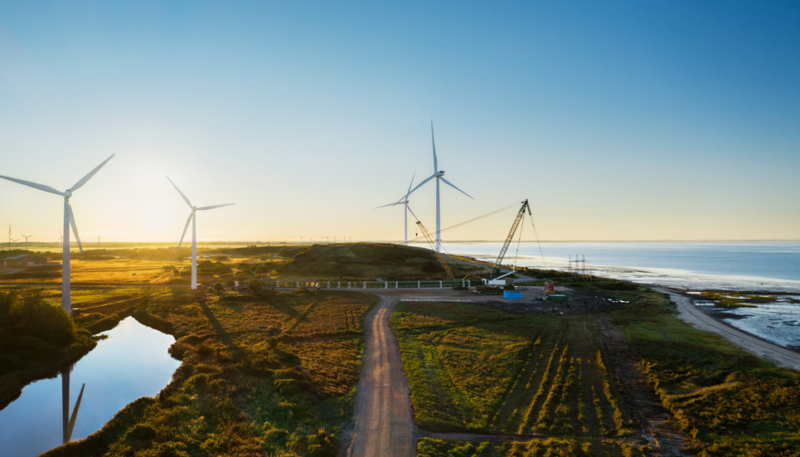Apple today announced that it is planning to construct two of the world’s largest onshore wind turbines near Esbjerg in Denmark, as part of an expansion of its investment in renewable energy.
An Apple press release laid out the plans for new 200-meter-tall turbines that will produce 62-gigawatt hours of energy every year, enough to power almost 20,000 homes. The site will function as a test site for more powerful offshore wind turbines that will possibly be erected in the future.
The power produced at Esbjerg will support Apple’s data center in Viborg, with all surplus energy going into the Danish grid. The Viborg data center powers App Store, iMessage, Siri, Apple Music, and other services for Europe. Apple previously constructed one of Scandinavia’s largest solar arrays to power the data center.
“Combatting climate change demands urgent action and global partnership — and the Viborg data center is powerful proof that we can rise to this generational challenge,” said Apple’s vice president of Environment, Policy and Social Initiatives, Lisa Jackson. “Investments in clean energy deliver breakthrough innovations that bring clean energy and good jobs to businesses and local communities. This is an area where we have to lead — for the sake of our planet and future generations.”
Last month, Apple announced its plans to become carbon neutral across its entire business, manufacturing supply chain, and product life cycle by 2030. While Apple’s operations are already powered by 100% renewable energy and carbon-neutral, this new commitment will mean that by 2030, every Apple device sold will have net-zero climate impact. This includes transitioning all of its European-based suppliers to renewable power.
Germany-based supplier Varta committed this week to running its Apple production with 100 percent renewable power. Across Europe, Apple’s suppliers are working toward clean energy solutions for their Apple productions — including Henkel and tesa SE, also based in Germany, DSM Engineering Materials based in the Netherlands, STMicroelectronics based in Switzerland, and Solvay based in Belgium.


